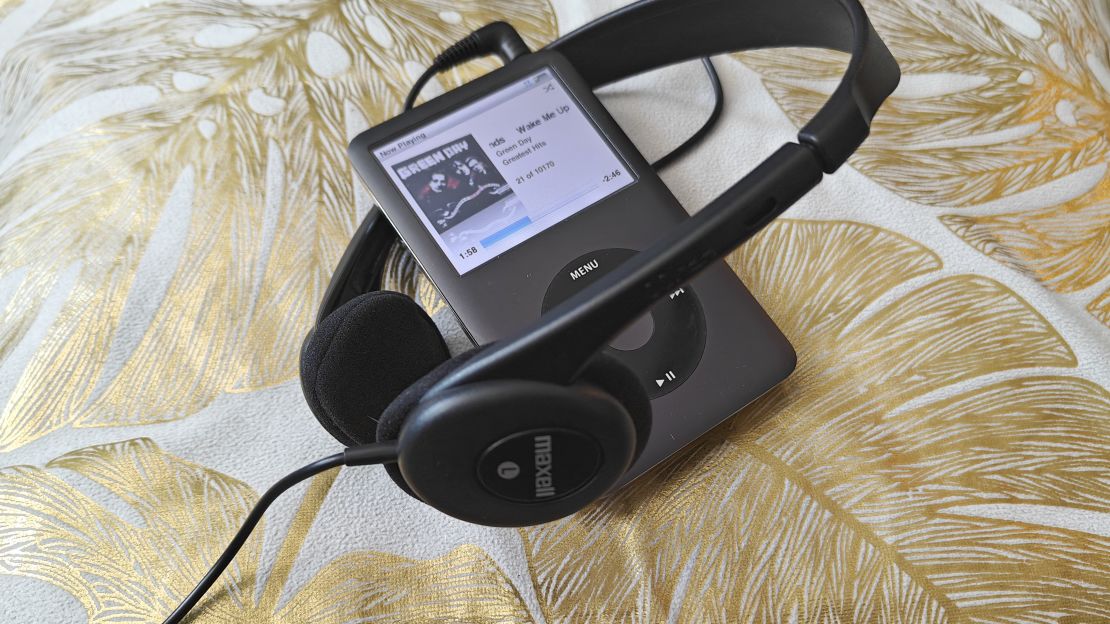Remember open-air stereo headphones? I’m talking about those small old-school headphones with easily tearable foam on the speakers that you likely had plugged into your Sony Walkman back in the day. That should ring a bell.
There isn’t much of a demand for them these days. However, they still exist, and the probability of seeing a pair behind the counter of your local bodega or CVS is high. You may even end up seeing the Maxell HP-100, which are a notable pickup at under $6 for folks seeking out the best budget headphones.
What’s so appealing about these headphones? Audio quality, retro styling and several underlying traits that raise their value. Come see what I’m talking about.
These lightweight wired headphones provide natural sound and stronger craftsmanship than their ridiculously low price suggests.
How I found the Maxell HP-100 Headphones
The brand contacted me about sampling its latest headphone and earbud releases, which I graciously accepted. Capturing my attention most were the HP-100 headphones. Nostalgia got the best of me as I tore through the packaging to see whether these cans held up well. The answer? Do they ever! And in more ways than just audio performance.
Why the Maxell HP-100 Headphones are a score
The HP-100 won’t replace the high-end specs and features of your AirPods Pro 2 or Sony WH-1000XM5, but they’re a suitable alternative for when you need an audio fix while your favorite wireless headphones recharge.
Underneath their thin design lie 30mm drivers that pump out respectable sound quality to help you enjoy contemporary tracks. I dove deep into my ’90s music catalog and found the headphones serviceable for alternative, hip-hop and R&B recordings. The snares on LL Cool J’s “Mama Said Knock You Out” knocked hard, while the guitar riffs on Weezer’s “Buddy Holly” sounded electric over the steady and impactful drums. Not every song or music genre performed similarly, as I experienced with Bell Biv Devoe’s “Poison,” which emphasized rich, crisp mids over the track’s iconic and energetic snare pattern. It threw me for a loop at first, but then the bass presence grew as the song progressed.

These headphones share a similar weight to most wireless earbuds: 0.8 ounces. This is a huge benefit from a comfort standpoint. They won’t weigh down your neck or skull. Also, they don’t have tight clamp force, meaning your ears and head won’t take on unwanted pressure. I wore the HP-100 daily for three-hour stretches and didn’t feel fatigued.
Current wired headphones are stingy with aux cable length, but Maxell is generous and grants up to 6 feet of cable. This gives listeners enough breathing room and flexibility to move around without the slightest tug pulling their iPhone or MacBook to the ground.
Build quality is often a concern for inexpensive wired headphones, and while you shouldn’t expect the greatest protection from the HP-100, they are decently built to ensure long-term use. The wire is noticeably thicker than other similarly priced headphones, though I wouldn’t tug it to test quality control. Even the plastic covering on the headband and speakers is stronger than what I remember using in the ’90s. Just be careful not to sit or step on these.
If you want something that can block out external sounds, look elsewhere because the HP-100’s noise isolation is very poor. I tested them while construction work was being done on my building’s floor and couldn’t block out the loud drilling that took place three apartments down. Just imagine what it would sound like if the noise were coming from the same room you were in.
Any other complaint about these affordable $6 headphones would be nitpicking. I still prefer the $15 Sony ZX wired headphones for Sony’s more dynamic soundstage; however, the adequate construction and sound these headphones deliver for only several bucks can’t be overlooked.


















